Liberty or Death
- Carol Anne Jones

- Sep 13, 2020
- 4 min read
Updated: Sep 16, 2020
After a period of relative calm because of the lockdown and COVID-19, the last three weeks have propelled me into action from working online and completing some studio work to the polar opposite of face to face working. This of course has been a shock to the system but we all adapt given our circumstances. Returning to some sort of normality’s felt a little like being in a Gladiator pit and working in an international environment adds to those challenges of adaptability.
As we know, different cultures have different ways of working. In Italy where I lived for five years, if there’s a problem the best thing to do is to go for a three course lunch, shuffle the papers around on your desk until some inspiration appears. Hierarchy matters, your job title and position in the work ladder determines how people treat you and how you can treat others. Suggesting advice or offering constructive criticism to anybody above you in the system is not appreciated. The British like to get things done, more of a flat management style, once a decision is made, things move on swiftly, decisions made through confronting the issue or problem head on. A similar but not quite the same trend is manifested in the Northern European countries for which their efficiency is known. There are of course many variations on approaches to work around the world and many articles have been written on this subject.
Here in China now that it's moved away from a low wage and high labour economy towards an entrepreneurial one, the ways of working have been extremely adaptive as has the speed of change. For example, China has created its own Silicon Valley space to forge innovation for electronic companies. We could call it the avenue of entrepreneurs. The space is an extremely competitive one and the participants are involved in a copycat culture where there’s no absolute respect for intellectual property rights. If somebody has a good idea other people steal it immediately. So if you have a good idea you have to act on it or somebody else will act on it, an extremely dynamic situation. But from this all kinds of new electronic systems and new structures have been born, all sorts of innovation, diffusion, and implementation. The idea of stealing other people’s ideas is considered good. Silicon Valley’s entrepreneurs have earned a reputation of being some of the hardest working in America, passionate founders who've put in all nighters in a bid to get a product out while obsessively iterating that product to seek out the next big thing. From a Chinese perspective Silicon Valley looks sluggish. Every day spent in China’s start up scene is a trial by fire, like a day spent as a gladiator in ancient Rome's Coliseum. The battles are life or death, and your opponents have no scruples.
I visited the Coliseum in Rome for the first time in 2013. At the time I was hobbling on crutches due to a New Year's Eve accident. It was a cold day and I thought back then, you must be crazy to be a Gladiator in Rome. Most people have seen Russell Crowe and the Charlton Heston Movies. Life looked hard, facing death on a daily basis is certainly not something to be taken lightly.
The tradition of gladiator fighting lasted for over 650 years throughout the Roman Empire and was a fixture in the Roman entertainment calendar. Early on, most gladiators were condemned prisoners and slaves who were sacrificed by their Emperors. Later, when the Coliseum opened in 80 AD, being a gladiator proved a lucrative career move and gladiator schools were set up to train volunteer fighters. The schools enticed free men with the hope of winning a stake of the prize money and ultimately, glory. These new fighters included retired soldiers, women, warriors and men desperate to make a living. Some were even knights and nobles who wanted to prove their pedigree and show off their fighting skills. Gladiator schools offered both safety and incarceration, the security of three meals a day and the best possible medical attention. But the recruits, who were free men, had to live in shackles and were not allowed to speak at mealtimes. Their diet consisted of protein and carbohydrates with no option of wine, only water. Although the gladiators were fighting fit, most of them were a little on the round side. Extra ‘padding’ around the midsection was desirable, as it offered some protection against superficial sword wounds.
Some historians say one in five died in battle, others one in ten, yet most only lived to their mid-twenties anyway. However, it was also commonplace at fights held at the Coliseum for the Emperor to have the final say as to whether the combatants lived or died invoked by the opinions of the audience to help decide the matter. Pure fate. When an opponent was overpowered the victor would turn to the crowd for a reaction. The defeated gladiator would sometimes hold up a finger on his left hand asking to be spared. But the crowd had the final say.
These games were so popular that successful gladiators could become extremely rich, famous or sex symbols with the lower classes. Their portraits graced the walls of many public places; children played with gladiator action figures made of clay; and the most successful fighters even endorsed products just like the top athletes of today.
The strength and courage it must have taken to step into battle and face death on a regular basis is unfathomable. But why did these Gladiators do it? Surely the lure of the thrill of battle and the roar of the crowds and the hope of winning glory and prize money and they probably had nothing to loose. After subtracting the life and death matter, not much has changed since then has it ?
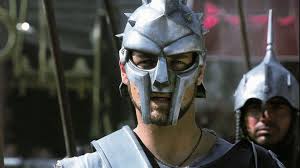

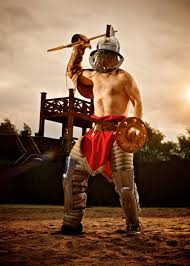
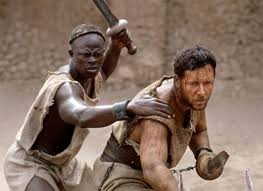
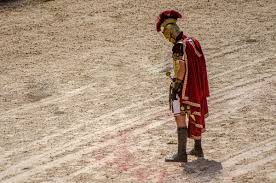

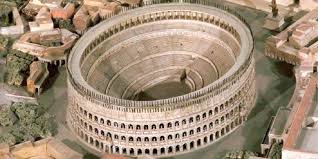


Comments